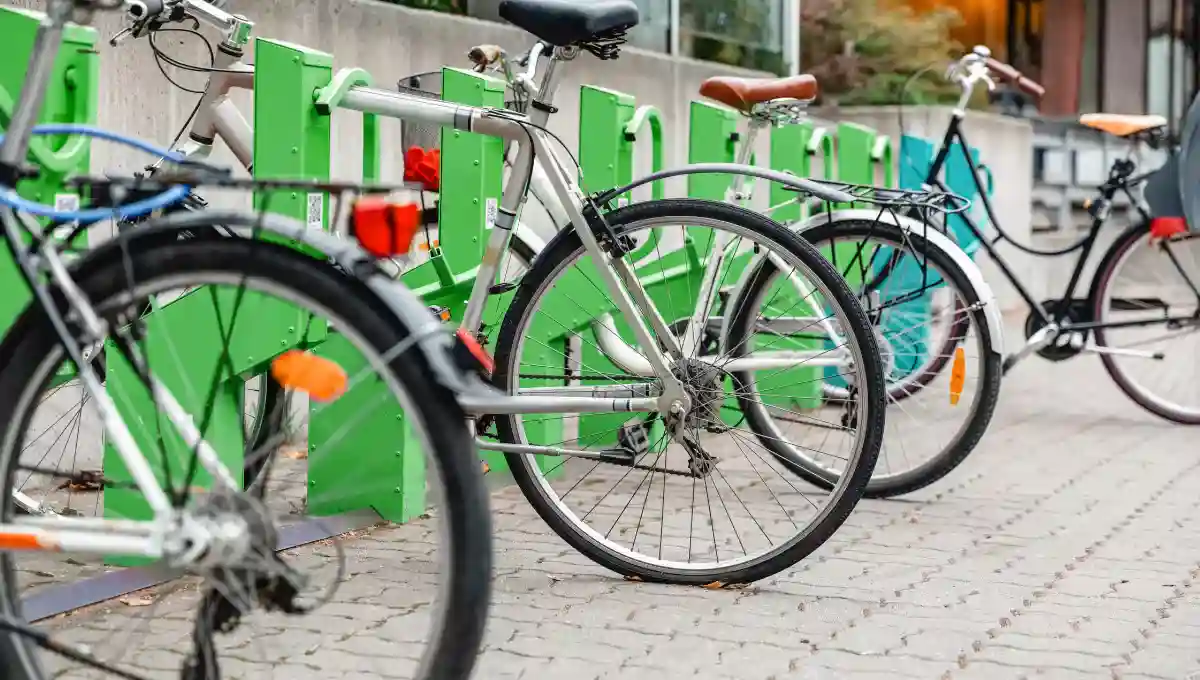Sustainable tourism, a concept gaining prominence worldwide, holds particular significance in the Indian context. As a country blessed with diverse landscapes, rich cultural heritage, and abundant biodiversity, India is striving to balance the growth of its tourism industry with environmental and cultural preservation.
- Importance of Sustainable Tourism
- Balancing Ecology and Economy in Sustainable Tourism in India
- Preserving Cultural Heritage Through Sustainable Tourism in India
- Social Impact and Community Development in Sustainable Tourism
- Eco-Friendly Accommodations
- Preserving India's Biodiversity: The Role of Sustainable Wildlife Tourism
- Cultural Immersion: The Heart of Sustainable Tourism in India
- Embracing Sustainable Transportation for Eco-Friendly Exploration in India
- Empowering Communities: The Crucial Role of Community Engagement in Sustainable Tourism
- Eco-Friendly Practices for Responsible Travelers
- 1. Leave-No-Trace Principles
- 2. Choose Sustainable Accommodations
- 3. Conserve Water and Energy
- 4. Use Sustainable Transportation
- 5. Support Local and Sustainable Cuisine
- 6. Choose Sustainable Souvenirs
- 7. Respect Wildlife and Nature
- 8. Contribute to Local Conservation Efforts
- 9. Educate Yourself and Others
- 10. Offset Your Carbon Footprint
- Impact of COVID-19 on Sustainable Tourism
- Sustainable Tourism In India: A Closer Look
- FAQs About Sustainable Tourism In India
- Tell Us In Comments your opinion about Sustainable Tourism In India
 Importance of Sustainable Tourism
Importance of Sustainable Tourism


Sustainable Tourism In India isn’t merely about exploring; it’s about finding the delicate balance between ecology and economy. As tourists, we become custodians of the environment, preserving cultural heritage and contributing to community development.
1. Preserving the Environment
Sustainable tourism focuses on minimizing the impact on the environment. By promoting responsible travel practices, such as waste reduction, energy conservation, and protecting natural habitats, tourists play a crucial role in preserving India’s breathtaking landscapes and biodiversity.
2. Cultural Heritage Conservation
India is a treasure trove of cultural diversity, with each region boasting its unique traditions, art, and history. Sustainable tourism aims to safeguard this cultural wealth by encouraging respectful interactions with local communities, supporting traditional crafts, and promoting awareness of the importance of cultural preservation.
3. Community Development
Sustainable tourism strives to benefit local communities economically and socially. By engaging with local businesses, staying in eco-friendly accommodations, and participating in community-based tourism initiatives, travelers contribute directly to the welfare of the people living in tourist destinations.
4. Empowering Local Economies
Supporting local economies is a key aspect of sustainable tourism. When tourists choose to buy locally-made products, dine at neighborhood eateries, and hire local guides, they become active contributors to the economic growth of the communities they visit.
5. Promoting Responsible Practices
Sustainable tourism encourages responsible behaviors among both tourists and tourism operators. This includes respecting local customs, minimizing waste, and choosing eco-friendly transportation options. These practices help build a culture of awareness and responsibility within the tourism industry.
6. Conserving Natural Resources
India, with its varied ecosystems, faces challenges related to resource depletion. Sustainable tourism emphasizes the conservation of natural resources by promoting eco-friendly accommodations, responsible water usage, and sustainable transportation methods, ensuring that these resources are available for future generations.
7. Educational Opportunities
Sustainable tourism provides a platform for educational experiences. Tourists gain a deeper understanding of the environment, local cultures, and the challenges faced by communities. This increased awareness fosters a sense of responsibility and encourages travelers to make informed choices.
Balancing Ecology and Economy in Sustainable Tourism in India

Embarking on the journey of sustainable tourism in India unfolds a vibrant tapestry where nature and local economies coalesce harmoniously. This unique approach is visible across diverse destinations, ranging from the majestic Himalayas to the sun-kissed beaches of Goa, all of which underscore the importance of responsible travel practices.
1. Himalayan Marvels
Nestled in the northern part of India, the Himalayan region is a sanctuary of biodiversity. Sustainable tourism here focuses on preserving the fragile ecosystem by implementing measures such as controlled trekking, waste management, and promoting eco-friendly accommodations. This not only safeguards the environment but also supports the livelihoods of local communities dependent on the region’s natural resources.
2. Serene Beaches of Goa
Goa, with its pristine beaches, is a testament to how sustainable tourism can thrive in coastal regions. Efforts are made to protect marine life, reduce plastic usage, and encourage sustainable fishing practices. Local businesses, including beachside vendors and traditional artisans, benefit from the economic influx generated by responsible tourists.
3. Wildlife Sanctuaries and Reserves
India’s wildlife sanctuaries and reserves showcase a delicate balance between wildlife conservation and economic sustainability. Responsible tourism practices include controlled visitor numbers, wildlife-friendly safari options, and supporting local conservation initiatives. These measures ensure that the economic benefits from tourism contribute to the preservation of the country’s rich biodiversity.
4. Cultural Heritage Conservation
Historical and cultural destinations in India exemplify the fusion of ecology and economy. Sustainable tourism initiatives in places like Jaipur, Agra, and Varanasi emphasize heritage conservation, promoting eco-friendly transportation, and supporting local artisans. This ensures that the economic benefits of tourism contribute to the maintenance and restoration of these cultural treasures.
5. Rural Tourism Experiences
The heart of sustainable tourism lies in rural areas, where visitors can immerse themselves in the local way of life. Initiatives such as homestays, local tours, and cultural exchanges empower rural communities economically. Travelers get an authentic experience, and the economic benefits directly support the preservation of local traditions and natural surroundings.
6. Eco-Friendly Accommodations
Sustainable tourism in India places a strong emphasis on eco-friendly accommodations. From boutique eco-resorts in the Western Ghats to sustainable lodges in national parks, these establishments prioritize energy efficiency, waste reduction, and sustainable building practices. Tourists choosing such accommodations contribute to both environmental conservation and the local economy.
7. Responsible Adventure Tourism
Adventure tourism in India, whether it’s trekking in the Himalayas or exploring the Western Ghats, aligns with sustainable principles. Tour operators follow guidelines for minimal environmental impact, and tourists are encouraged to adhere to responsible trekking and adventure practices. This ensures that the allure of adventure does not compromise the natural beauty of these destinations.
Preserving Cultural Heritage Through Sustainable Tourism in India

Sustainable tourism in India goes beyond environmental concerns. It delves into preserving the rich cultural heritage that defines the nation. Traditional art, craft experiences, and local cuisines contribute to an immersive and authentic journey.
1. Traditional Arts and Crafts
India is a kaleidoscope of traditional arts and crafts, each region boasting its unique forms. Sustainable tourism initiatives actively support local artisans and craftsmen, ensuring the continuity of age-old traditions. Travelers can engage in hands-on experiences, witnessing the creation of intricate textiles, pottery, and handicrafts, thereby contributing to the preservation of these artistic legacies.
2. Culinary Exploration
The cuisine of India is a vibrant mosaic reflecting its cultural diversity. Sustainable tourism encourages travelers to explore local markets, savor traditional dishes, and even participate in cooking classes. By supporting local eateries and embracing culinary experiences, tourists play a role in preserving regional food cultures, ensuring that age-old recipes continue to thrive.
3. Historical Landmarks and Monuments
India’s historical landmarks and monuments are not just architectural marvels; they are living testimonials of the country’s rich history. Sustainable tourism emphasizes responsible visitor conduct, conservation efforts, and community engagement around these sites. This ensures that these iconic structures are not just preserved physically but also appreciated in their cultural context.
4. Cultural Festivals and Events
India’s calendar is dotted with vibrant cultural festivals and events. Sustainable tourism encourages travelers to participate respectfully in these celebrations, supporting local communities and gaining insights into age-old traditions. By attending festivals, tourists contribute to the preservation of cultural heritage and help sustain the economic vitality of the communities hosting these events.
5. Living Heritage
Some destinations in India offer a living heritage experience, where ancient traditions and customs are an integral part of daily life. Sustainable tourism encourages travelers to engage with these communities, participating in rituals, folk performances, and traditional ceremonies. This not only provides an authentic cultural experience but also supports the continuity of living heritage practices.
6. Cultural Immersion Programs
Cultural immersion programs, including homestays and community-based tourism, provide travelers with the opportunity to live alongside local communities. These programs foster cross-cultural understanding and contribute directly to the economic well-being of the communities. In turn, this sustains the cultural practices and traditions passed down through generations.
7. Preservation of Language and Folklore
Language and folklore are integral components of India’s cultural heritage. Sustainable tourism promotes the preservation of indigenous languages and folk traditions. Travelers can engage with local communities, listen to folk tales, and even learn basic phrases in regional languages, contributing to the safeguarding of linguistic diversity and cultural storytelling.
Social Impact and Community Development in Sustainable Tourism

Engaging with local communities is integral to sustainable tourism. Visitors can contribute to community development by supporting local businesses and participating in initiatives that empower indigenous peoples.
1. Supporting Local Businesses
Sustainable tourism encourages visitors to patronize local businesses, from quaint handicraft stores to neighborhood eateries. By choosing locally made products and dining at indigenous restaurants, tourists contribute directly to the economic well-being of the community. This financial support aids in sustaining local businesses, preserving traditional crafts, and fostering a sense of pride within the community.
2. Community-Based Tourism Initiatives
Many regions in India have embraced community-based tourism initiatives. These programs involve travelers in the daily life of local communities, offering unique experiences such as homestays, guided village tours, and cultural exchanges. The revenue generated from these initiatives directly benefits the community, providing funds for infrastructure development, education, and healthcare.
3. Empowering Indigenous Peoples
Sustainable tourism emphasizes the empowerment of indigenous peoples. Visitors can engage with local communities, learn about their customs and traditions, and support initiatives that preserve their way of life. This involvement fosters cultural exchange, and mutual respect, and contributes to the sustainable development of indigenous communities.
4. Educational and Skill Development Programs
Sustainable tourism initiatives often include educational and skill development programs for local communities. Tourists can actively participate in these programs, ranging from teaching basic skills to organizing workshops. By contributing to educational initiatives, visitors play a role in enhancing the capabilities of community members, paving the way for sustainable economic development.
5. Fair Trade Practices
Embracing fair trade practices is a key aspect of community development in sustainable tourism. Travelers are encouraged to purchase products from fair trade outlets, ensuring that artisans and producers receive fair compensation for their work. This ethical approach helps in breaking the cycle of exploitation and promotes sustainable economic growth within communities.
6. Environmental Conservation with Community Involvement
Environmental conservation projects that involve local communities are integral to sustainable tourism. Tourists can participate in tree planting, clean-up drives, and other eco-friendly initiatives alongside community members. This shared responsibility fosters a sense of ownership and pride in preserving the natural surroundings.
7. Promoting Social Equity
Sustainable tourism strives to promote social equity within communities. Visitors are encouraged to be mindful of cultural sensitivities, support initiatives that address social issues, and engage in responsible tourism practices. This ensures that tourism benefits all segments of the community, fostering a more inclusive and equitable society.
Eco-Friendly Accommodations

Choosing green hotels, eco-resorts, or homestays is a crucial aspect of sustainable tourism. These accommodations prioritize eco-friendly practices, ensuring your stay leaves a minimal environmental footprint.
1. Energy Efficiency
Eco-friendly accommodations prioritize energy efficiency. From the use of renewable energy sources like solar power to implementing energy-saving technologies, these establishments aim to reduce their overall energy consumption. By choosing such accommodations, tourists actively support the transition to sustainable energy practices.
2. Water Conservation
Sustainable accommodations are conscious of water usage. They employ water-saving fixtures, implement rainwater harvesting systems, and often encourage guests to practice responsible water consumption. This not only conserves a precious resource but also promotes awareness about the importance of water conservation among visitors.
3. Waste Reduction and Recycling
Green hotels and eco-resorts are committed to minimizing waste. They implement recycling programs, reduce single-use plastics, and often compost organic waste. By staying in such accommodations, tourists contribute to the reduction of environmental impact associated with excessive waste generation.
4. Sustainable Building Material
Eco-friendly accommodations often use sustainable building materials that have a lower environmental impact. From recycled wood to eco-friendly insulation, these establishments prioritize construction practices that minimize the depletion of natural resources and promote eco-conscious building standards.
5. Local and Organic Cuisine
Sustainable tourism extends to the dining experience. Eco-friendly accommodations emphasize local and organic cuisine, sourcing ingredients from nearby farmers and markets. By choosing these establishments, tourists support local farmers and reduce the carbon footprint associated with food transportation.
6. Biodiversity Conservation
Some eco-resorts are situated in ecologically sensitive areas and take measures to protect local biodiversity. These accommodations may engage in reforestation projects, create wildlife-friendly landscapes, and educate guests about the importance of preserving the natural environment.
7. Educational Initiatives
Eco-friendly accommodations often incorporate educational initiatives into the guest experience. This may include information about local ecosystems, wildlife conservation efforts, or tips on how guests can adopt sustainable practices in their daily lives. Such initiatives contribute to raising awareness about environmental issues.
8. Community Engagement
Sustainable accommodations frequently engage with local communities. This can involve hiring locally, supporting community projects, and offering guests opportunities to interact with and contribute to the well-being of the nearby communities. This ensures that the economic benefits of tourism are shared with the local populace.
Preserving India’s Biodiversity: The Role of Sustainable Wildlife Tourism

India’s biodiversity is a treasure, and sustainable tourism plays a pivotal role in preserving it. Responsible wildlife tourism, coupled with visits to national parks and sanctuaries, allows travelers to appreciate nature without harming it.
1. Importance of Biodiversity
India’s ecosystems are home to a staggering variety of plants and animals. From the majestic Bengal tiger to the vibrant birdlife in the Western Ghats, each species contributes to the intricate balance of nature. Sustainable wildlife tourism recognizes the significance of biodiversity in maintaining ecological health and seeks to protect these habitats.
2. Responsible Wildlife Tourism
Sustainable tourism practices in wildlife areas prioritize responsible behavior. This includes adhering to designated trails, maintaining a safe distance from animals, and minimizing noise pollution. By engaging in responsible wildlife tourism, travelers contribute to the well-being of the fauna and their natural habitats.
3. Supporting Conservation Efforts
Many national parks and wildlife sanctuaries in India actively engage in conservation efforts. Sustainable tourism channels funds towards these initiatives, supporting anti-poaching measures, habitat restoration, and research programs. Tourists become crucial contributors to the ongoing conservation work in these areas.
4. Education and Awareness
Sustainable wildlife tourism incorporates educational components to raise awareness about the importance of conservation. Visitors are often provided with information about the local flora and fauna, conservation challenges, and the role they can play in preserving these ecosystems. This educational aspect fosters a sense of responsibility among tourists.
5. Eco-Friendly Practices in Accommodations
Accommodations near wildlife areas often adopt eco-friendly practices. These establishments prioritize sustainability in their operations, from energy-efficient lighting to waste reduction initiatives. Tourists staying in such accommodations actively support environmentally conscious practices in and around these sensitive ecosystems.
6. Community Involvement
Sustainable wildlife tourism emphasizes community involvement in conservation efforts. Local communities are often partners in wildlife conservation projects, and their engagement is crucial for the success of these initiatives. Tourists contribute to community well-being by participating in ecotourism activities that directly benefit local residents.
7. Balancing Tourism and Conservation
Striking a balance between tourism and conservation is a delicate task. Sustainable wildlife tourism endeavors to find this equilibrium by implementing visitor caps, establishing designated routes, and employing technologies like eco-friendly vehicles for safaris. This ensures that the joy of experiencing wildlife does not compromise the well-being of the natural habitats.
8. Promoting Responsible Photography
Sustainable wildlife tourism promotes responsible photography practices. This includes refraining from using flash photography, maintaining a respectful distance from animals, and avoiding behaviors that may disturb the natural behavior of wildlife. Responsible photography helps minimize stress on the animals and ensures a more ethical wildlife experience.
Cultural Immersion: The Heart of Sustainable Tourism in India

Cultural immersion is at the heart of Sustainable Tourism In India. Travelers can partake in traditional art, and craft experiences, and relish local cuisine, creating meaningful connections and fostering cultural exchange.
1. Traditional Arts and Crafts
Cultural immersion begins with a celebration of traditional arts and crafts. Visitors have the opportunity to engage with local artisans, witnessing the creation of intricate textiles, pottery, and handicrafts. By actively participating in these experiences, tourists contribute to the preservation of age-old artistic traditions and forge connections with skilled craftsmen.
2. Local Cuisine Exploration
A significant aspect of cultural immersion is the exploration of local cuisine. Sustainable tourism encourages travelers to venture into local markets, sample authentic dishes, and even participate in cooking classes. By relishing regional flavors, tourists not only support local eateries but also gain insights into the culinary traditions that have been passed down through generations.
3. Festivals and Celebrations
India’s vibrant calendar is adorned with a kaleidoscope of festivals and celebrations. Cultural immersion invites tourists to participate respectfully in these events, whether it’s the colorful Holi festival or the joyous Diwali celebrations. Engaging in these festivities offers a firsthand experience of cultural richness and fosters a sense of shared celebration with the local community.
4. Historical and Cultural Landmarks
Visiting historical and cultural landmarks is an integral part of cultural immersion. Sustainable tourism encourages travelers to not just observe but to actively appreciate the stories behind iconic structures. Guided tours and interactions with local guides provide a deeper understanding of the cultural significance of these landmarks.
5. Living Heritage Experiences
Some destinations offer living heritage experiences, where ancient traditions are an integral part of daily life. Cultural immersion allows tourists to participate in rituals, folk performances, and traditional ceremonies. These interactions provide not only an authentic cultural experience but also support the continuation of living heritage practices.
6. Community-Based Tourism
Cultural immersion often involves community-based tourism initiatives. Travelers can opt for homestays, guided village tours, and cultural exchanges that provide a glimpse into the daily lives of local communities. These experiences foster cross-cultural understanding and contribute directly to the economic well-being of the communities.
7. Learning Local Languages
Language is a key element of culture, and cultural immersion may include learning basic phrases in local languages. This simple effort not only facilitates communication but also showcases a genuine interest in understanding and respecting the local culture. Locals often appreciate the gesture, fostering a warm and inclusive atmosphere.
8. Artistic Performances and Workshops
Many destinations offer artistic performances and workshops, ranging from traditional dance performances to music concerts. Cultural immersion invites travelers to attend these events, supporting local artists and gaining insights into the artistic expressions that are deeply woven into the fabric of the culture.
Embracing Sustainable Transportation for Eco-Friendly Exploration in India

In the realm of sustainable tourism, the way we traverse landscapes becomes as vital as the destinations themselves. India, with its diverse and vibrant locales, is paving the way for eco-conscious travelers by promoting sustainable transportation options. From public transport initiatives to the use of electric vehicles and cycling tours, exploring India transforms into a conscious choice to reduce carbon footprints.
1. Efficient Public Transport
Sustainable tourism in India encourages the use of efficient public transport systems. Cities and tourist destinations are investing in well-connected buses and trains, making it easier for travelers to navigate while significantly reducing the environmental impact of individual vehicle use. Opting for public transport becomes a collective effort towards sustainable exploration.
2. Electric Vehicles (EVs)
The rise of electric vehicles is a significant stride in sustainable transportation. Tourists can now choose eco-friendly options such as electric taxis and rickshaws, contributing to reduced air pollution and lowering carbon emissions. The growing availability of EV charging stations further supports the adoption of electric vehicles for a cleaner and greener travel experience.
3. Cycling Tours
Cycling tours are gaining popularity as a sustainable and immersive way to explore India. Cities and rural areas alike are introducing cycling initiatives, allowing tourists to pedal through landscapes, interact with local communities, and minimize their environmental impact. Cycling not only reduces carbon footprints but also promotes a healthier and more intimate travel experience.
4. Pedestrian-Friendly Infrastructure
Sustainable transportation involves creating pedestrian-friendly infrastructure in urban and tourist areas. Well-designed walkways and pedestrian zones not only promote walking as a sustainable mode of travel but also enhance the overall safety and enjoyment of the destination.
5. Car-Sharing and Ride-Sharing Services
Car-sharing and ride-sharing services contribute to reducing the number of individual vehicles on the road. Sustainable tourism encourages travelers to utilize these services, optimizing transportation resources and minimizing traffic congestion. This shared approach aligns with the principles of responsible and eco-conscious exploration.
6. Promotion of Non-Motorized Transport
Non-motorized transport options, such as cycle rickshaws and traditional boats, are promoted in various regions of India. These modes of transport not only preserve local traditions but also offer an environmentally friendly way to navigate through specific areas, especially in heritage sites and cultural districts.
7. Awareness and Education Campaigns
Sustainable transportation is closely linked to awareness and education. Tourism boards and local communities are initiating campaigns to educate both locals and tourists about the environmental impact of transportation choices. This awareness encourages responsible travel practices and fosters a collective commitment to sustainable exploration.
8. Incentives for Sustainable Transport
Governments and businesses are introducing incentives to encourage the use of sustainable transport options. These incentives may include discounts for public transport, rewards for choosing electric vehicles, or special offers for tourists opting for eco-friendly modes of transportation.
Empowering Communities: The Crucial Role of Community Engagement in Sustainable Tourism

Community engagement is not just a choice; it’s a cornerstone that shapes the ethical and responsible growth of the industry. In India, where cultural diversity is as vast as its landscapes, involving local communities in tourism decisions becomes not only crucial but also transformative. Sustainable tourism initiatives should empower indigenous peoples, ensuring they not only benefit from but actively participate in the industry.
1. Participatory Decision-Making
Sustainable tourism begins with involving local communities in decision-making processes. From determining tourism policies to planning infrastructure developments, giving a voice to indigenous peoples ensures that their perspectives and concerns are considered, fostering a sense of ownership and pride.
2. Economic Empowerment
Community engagement aims at economic empowerment. Sustainable tourism initiatives should create opportunities for local businesses, whether through partnerships with tour operators, the establishment of community-owned enterprises, or support for local markets. Economic empowerment ensures that the financial benefits of tourism directly contribute to community well-being.
3. Cultural Preservation
Preserving cultural heritage is a shared responsibility. Community engagement encourages the active participation of local communities in preserving their cultural identity. This may involve supporting traditional art and craft initiatives, maintaining historical landmarks, and showcasing authentic cultural experiences.
4. Tourism Education and Training
Empowering local communities involves providing education and training opportunities. Sustainable tourism initiatives should invest in programs that enhance the skills of community members, whether it’s in hospitality, guiding, or other tourism-related activities. This not only improves employment prospects but also ensures a high level of service for tourists.
5. Respect for Indigenous Knowledge
Local communities often possess a wealth of indigenous knowledge about their environment and cultural practices. Community engagement promotes the recognition and respect of this knowledge, enriching the overall tourism experience for visitors and fostering a sense of pride among community members.
6. Responsible Tourism Practices
Engaging local communities helps establish and promote responsible tourism practices. Locals become advocates for sustainable behaviors, educating visitors about cultural sensitivities, environmental conservation, and ethical tourism practices. This mutual understanding fosters a positive and respectful exchange between tourists and communities.
7. Environmental Conservation Partnership
Sustainable tourism is intertwined with environmental conservation. Community engagement facilitates partnerships between local communities and conservation efforts. This may involve initiatives such as tree planting, wildlife protection, and sustainable resource management, ensuring that the ecological balance is preserved.
8. Cultural Exchange Programs
Cultural exchange programs create opportunities for tourists to interact directly with local communities. These programs, whether through homestays, guided village tours, or community-based activities, promote cross-cultural understanding. Tourists gain authentic insights, and communities benefit economically and socially from these exchanges.
9. Collaboration with Indigenous Leaders
Collaborating with indigenous leaders is crucial for effective community engagement. Sustainable tourism initiatives should involve local leaders in decision-making processes, as they play a pivotal role in representing the interests and aspirations of their communities.
Inclusive tourism policies ensure that the benefits of tourism are distributed equitably. Community engagement calls for the development of policies that consider the needs and aspirations of all community members, creating an inclusive and sustainable tourism environment.
Eco-Friendly Practices for Responsible Travelers

As stewards of the planet, travelers can play a pivotal role in preserving the beauty of the destinations they explore. Embracing eco-friendly practices goes beyond enjoying the scenery; it’s about leaving a positive impact on the places we visit. Here are some small yet impactful steps travelers can adopt to ensure their journeys enhance, rather than harm, the environment:
1. Leave-No-Trace Principles
- Pack it Out: Carry a reusable bag for your trash and dispose of it properly. Leave no waste behind, ensuring you leave the natural environment just as you found it.
- Stay on Designated Trails: Stick to designated paths to minimize damage to ecosystems. Avoid trampling on delicate flora and disturbing wildlife habitats.
2. Choose Sustainable Accommodations
- Opt for Eco-Friendly Stays: Choose accommodations with green certifications or those actively involved in eco-friendly practices. Support establishments that prioritize energy efficiency, waste reduction, and water conservation.
3. Conserve Water and Energy
- Limit Water Usage: Conserve water by taking shorter showers and reusing towels. Be mindful of the local water scarcity situation.
- Turn Off Lights and Electronics: Practice energy conservation by turning off lights and electronic devices when not in use. Unplug chargers to save energy.
4. Use Sustainable Transportation
- Choose Public Transport: Opt for public transportation to reduce your carbon footprint. Trains and buses are often more environmentally friendly than individual cars.
- Consider Walking or Cycling: Explore local areas on foot or by bicycle when possible. It’s not only eco-friendly but also a great way to immerse yourself in the surroundings.
5. Support Local and Sustainable Cuisine
- Dine at Local Establishments: Support local eateries that use regional, seasonal ingredients. This not only provides an authentic culinary experience but also supports local farmers.
- Minimize Food Waste: Order only what you can consume to minimize food waste. Carry a reusable container for leftovers.
6. Choose Sustainable Souvenirs
- Avoid Single-Use Plastics: Refrain from purchasing items with excessive packaging or single-use plastics. Bring a reusable shopping bag for your purchases.
- Opt for Locally Made Products: Choose souvenirs made by local artisans using sustainable materials. This promotes traditional craftsmanship and supports the local economy.
7. Respect Wildlife and Nature
- Observe from a Distance: Respect wildlife by observing from a safe distance. Avoid feeding animals as it can disrupt their natural behavior.
- Stay on Marked Paths: Stick to designated trails and avoid venturing into restricted areas to protect delicate ecosystems.
8. Contribute to Local Conservation Efforts
- Donate to Conservation Organizations: Support local conservation initiatives by making donations to reputable organizations working to protect the environment and wildlife.
- Participate in Community Clean-Ups: Join or organize clean-up activities to contribute to the maintenance of the local environment.
9. Educate Yourself and Others
- Learn About Local Customs: Educate yourself about the local customs and traditions. Respect cultural sensitivities to ensure your actions are culturally sensitive.
- Share Sustainable Practices: Encourage fellow travelers to adopt eco-friendly practices. The more individuals embrace sustainable travel, the greater the positive impact.
10. Offset Your Carbon Footprint
- Support Carbon Offset Programs: Consider supporting carbon offset programs to compensate for the environmental impact of your travel. Many organizations offer opportunities to invest in projects that reduce carbon emissions.
Impact of COVID-19 on Sustainable Tourism
The global pandemic has challenged the tourism industry, but it has also provided an opportunity for reflection and adaptation. Sustainable tourism in India has evolved to meet these challenges, emphasizing safety and responsible travel.
Sustainable Tourism In India: A Closer Look
India’s commitment to sustainable tourism is evident in various initiatives and policies. From promoting responsible travel to implementing eco-friendly practices, the nation is a beacon for conscious exploration.
- Challenges and Solutions: Sustainable Tourism In India faces challenges, including over-tourism and the need for improved infrastructure. However, the nation is actively addressing these issues, emphasizing awareness and education.
- Over-tourism and Infrastructure: India recognizes the strain on popular destinations and is investing in sustainable infrastructure to manage visitor influx without compromising the environment.
- Lack of Awareness and Education: Efforts are underway to educate both tourists and locals about sustainable tourism’s importance. Awareness campaigns highlight the positive impact of responsible travel on the environment and communities.
FAQs About Sustainable Tourism In India
There are a lot of questions that come to our mind related to India’s sustainable tourism, some of the commonly asked questions are answered below.
Q. What are the 3 main areas of sustainable tourism?
A. The three main areas are ecological sustainability, economic sustainability, and socio-cultural sustainability.
Q. What are the 7 forms of sustainable tourism?
A. Seven forms include ecotourism, cultural tourism, community-based tourism, adventure tourism, wildlife tourism, tourism, and educational tourism.
Q. What is an example of green tourism in India?
A. An example is the Nilgiri Biosphere Reserve, where eco-friendly practices and conservation efforts define the tourism experience.
Q. Which is India’s first sustainable tourism destination?
A. Sikkim is recognized as India’s first fully organic and sustainable tourism destination, emphasizing environmental and community well-being.
Tell Us In Comments your opinion about Sustainable Tourism In India
Also, don’t forget to book your personalized holiday package with Fiery Trippers. Let us make your vacation a romantic as well as a dreamy getaway.


